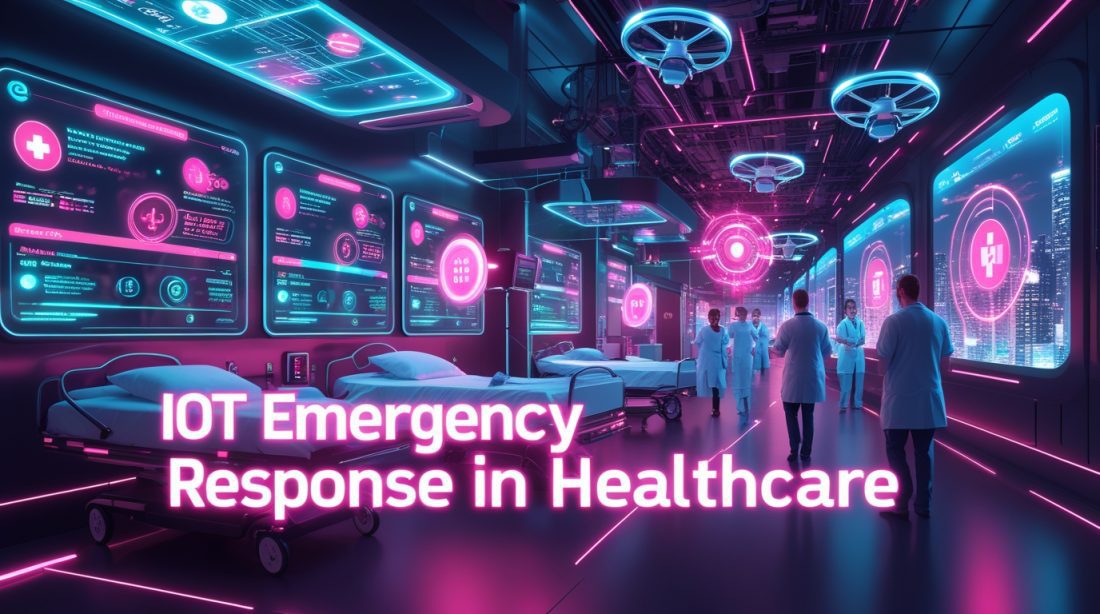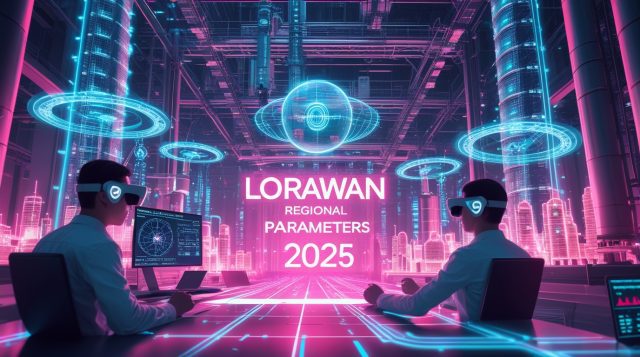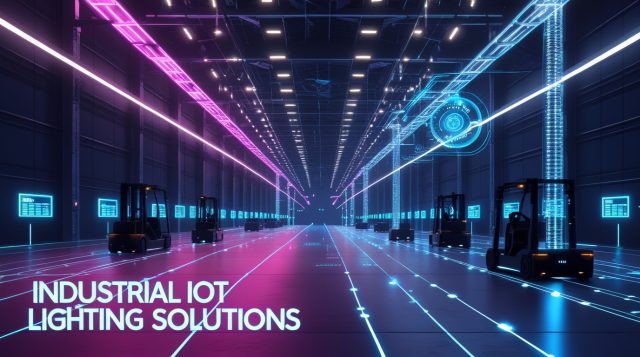Fast Facts
In 2025, IoT emergency response in healthcare is revolutionizing patient care by enabling real-time monitoring, predictive alerts, and faster interventions. From smart hospitals to wearable health devices, IoT is slashing emergency response times, reducing hospital readmissions, and powering intelligent medical systems. With industrial AI driving analytics and the European Health Data Space unlocking new possibilities, connected healthcare is becoming proactive, personalized, and life-saving.
How IoT Is Dramatically Transforming Healthcare and Slashing Emergency Response Times in 2025
A silent, connected network is making hospitals smarter and emergencies shorter.
Imagine a world where a health emergency triggers a help alert before you even reach for your phone. For an increasing number of people, this is now a reality. I recently read about a fictional patient, Sarah, who lives with a chronic heart condition. Her wearable health device detected anomalous rhythms and automatically alerted her clinic. A nurse called her within minutes, advising her to take a specific medication, potentially averting a full-blown cardiac event overnight. This is the new face of IoT emergency response in healthcare 2025—it’s proactive, not reactive.
In 2025, the fusion of connected devices and data analytics is fundamentally reshaping our medical systems. The IoT healthcare market growth is a powerful force, expected to reach $93.28 billion this year, showing just how deeply this technology is being embedded into patient care. This isn’t about vague potential; it’s about a tangible shift towards faster, more efficient, and more personalized healthcare that is actively saving lives by cutting critical response times.
Why IoT Is the Backbone of Modern Emergency Care
The traditional model of emergency response—relying on a person to recognize danger and call for help—is inherently flawed by delay. IoT introduces a paradigm of continuous, real-time health monitoring systems that remove these delays.
IoT for healthcare creates a network of interconnected devices—remote patient monitoring devices, smart hospital beds, and environmental sensors—that collect and transmit vital data seamlessly. This ecosystem allows medical professionals to detect crises as they emerge, not after they occur. The core value lies in its ability to turn data into instant action, creating a safety net that operates 24/7.
7 Powerful Ways IoT Is Transforming Patient Care and Emergency Response
1. Why Remote Patient Monitoring Is Slashing Hospital Readmissions
Remote patient monitoring devices track health metrics outside clinical settings, enabling continuous observation. The impact is staggering: RPM can cut hospital readmissions by up to 66% and save healthcare systems up to $6,500 per patient annually. During the pandemic, usage surged by 171%, proving its role in reducing hospital readmissions with technology. For emergency response, this means fewer crises and more proactive healthcare technology.
2. Why Smart Hospitals Are Achieving Unprecedented Efficiency
Smart hospital solutions optimize resource management and patient outcomes through interconnected systems.
- IoT asset tracking in hospitals: Hull University Teaching Hospitals NHS Trust used RFID to manage 70,000 assets, saving staff 35 hours annually.
- Hospital workflow optimization IoT: TeleTracking’s wristbands and real-time tracking reduced waiting times.
- Predictive maintenance medical equipment: IoT sensors monitor performance, preventing downtime and ensuring readiness during emergencies.
- Automated hospital inventory management: Real-time tracking of supplies ensures critical items are always available.
3. Why IoT Is the Critical Bridge in Telemedicine
The future of telemedicine and IoT is already here. Devices like digital stethoscopes and smart thermometers allow doctors to monitor patients remotely. Clare Island’s virtual hospital uses AI and IoT to manage chronic conditions, improving outcomes and reducing costs. This seamless care model supports connected drug delivery systems and IoT patient engagement tools, enabling faster, more accurate emergency interventions.
4. Why Continuous Monitoring Is Revolutionizing Chronic Disease Management
IoT for chronic disease management enables personalized care and early intervention. Diabetes programs show a 26% reduction in HbA1c; hypertension patients see blood pressure drops of 24% systolic and 20% diastolic. These intelligent medical devices predict exacerbations and keep patients out of the ER.
5. Why Predictive Maintenance of Medical Equipment Is a Lifesaver
Predictive maintenance medical equipment uses IoT sensors to track temperature, vibration, and usage. This data helps forecast failures, allowing proactive repairs. Combined with analytics, hospitals prevent downtime and ensure uninterrupted care. This is where industrial AI in the medical field plays a critical role.
6. Why Enhanced Drug Management Improves Patient Safety
Smart pill dispenser IoT devices remind patients to take medications and allow caregivers to monitor adherence. IoT sensors also track environmental conditions during storage and transport, ensuring drug safety and preventing emergencies.
7. Why Real-Time Public Safety Systems Are Cutting Response Times to Seconds
Beyond hospitals, IoT in public safety and health is creating safer environments. A study in Scientific Reports details a IoT emergency alert system for fires, accidents, and gas leaks. Using edge computing and cloud platforms, alerts are triggered in under 450 milliseconds with 95% accuracy.
The Industrial AI Analysis: Where Data Becomes Prediction
The true power of modern IoT in healthcare emergency response is unlocked by AI and IoT in healthcare, transforming raw data into predictive intelligence. Machine learning algorithms detect patterns invisible to humans, enabling proactive care. The FDA approved 223 AI-enabled medical devices in 2023 alone.
As one analysis notes, “By analyzing large amounts of medical data, primarily collected from IoT devices… healthcare providers can gain valuable insights into patients’ health issues, visualize patterns, and identify potential health risks.” This is the essence of IoT clinical trials efficiency and healthcare data analytics IoT.
Navigating the Roadblocks: Security and Interoperability
Despite its promise, challenges of IoT in medicine remain.
- IoT security in healthcare: More devices mean more vulnerabilities. Robust cybersecurity is essential to protect patient data.
- Seamless patient data sharing: Interoperability is key. Legacy systems must integrate with modern IoT platforms.
- Regulatory compliance: Devices must meet HIPAA and the EU’s AI Act standards.
The Future of Connected Health
Looking ahead, the European Health Data Space impact will unlock secondary use of health data for AI research. Expect more advanced wearable health devices 2025, zero-delay communication via 5G, and deeper fusion of AI and IoT.
From IoT for faster emergency response to cost savings from healthcare IoT, the transformation is just beginning.
Stay Informed on the Future of Healthcare
The world of digital health evolves fast. Get the latest insights on how technology is shaping patient care directly in your inbox. [Subscribe to our newsletter]



